Two Lives: Gertrude and Alice
MUP, $32.95 hb, 229 pp
Two Lives: Gertrude and Alice by Janet Malcolm
The subtitle of Janet Malcolm’s new book (published in Australia by Melbourne University Press) is Gertrude and Alice. Few names of literary couples can be so confidently trimmed. Scott and Zelda, Ted and Sylvia, George and Martha … all those happy couples. Gertrude and Alice has been used before, as the main title of Diana Souyhami’s joint study (1991), and will doubtless be used again. Their fame is an achieved and bankable thing, notwithstanding the fact that Gertrude Stein (1874– 1946) – whose books included Three Lives (1909), The Making of Americans (1925) and the wonderfully titled A Long Gay Book (1932) – remains perhaps the least read of the modernists.
Now Janet Malcolm, the celebrated author and New Yorker journalist, has added to the vast Stein–Toklas literature. We are never quite sure why, for she evinces no great liking for her subjects. Two Lives, while highly readable and diverting, has little of the drama or intrigue of Malcolm’s The Silent Woman: Sylvia Plath and Ted Hughes (1994). The author never becomes as philosophically engaged as she did in her unlikely but absorbing book about Sheila McGough, a small-time lawyer who went to jail because of her legal fundamentalism and literalism (The Crime of Sheila McGough [1999]).
Malcolm opens with an account of The Alice B. Toklas Cookbook (1954), the book that made Toklas famous as more than just the minatory figure often posed a few feet away from Gertrude Stein. The young Malcolm and her cohort of ‘pretentious young persons’, full of distaste for middlebrow American culture, seized on the eccentric cookbook, loving its waspishness and hauteur. This was in the late 1950s, when General Eisenhower (the Great Golfer, as Gore Vidal dubbed him) was still in the White House, and when ‘Liz and Eddie’ were breaking Debbie Reynolds’s heart.
Malcolm read Stein much later, often with difficulty. To the dismay of the Steinian scholars whom she interviews for Two Lives, Malcolm prefers the ‘audience’ (accessible) writing to the ‘real’ (experimental) stuff. Although she acknowledges that the writing ‘possesses a glitter that keeps one reading long past the time when it is normal to stop reading a text that makes no sense’, illustrating this with the mesmeric ‘An Acquaintance with Description’ (‘Let it be when it is mine to be sure let it be when it is mine when it is mine let it be …’ and so on), Malcolm baulks at the 925-page The Making of Americans, ‘believed to be a modernist masterpiece, but … not felt to be a necessary reading experience’. Malcolm finally conquers the book by slicing it up into several volumes and diligently rereading each sentence, as did John Ashbery, another recent convert.
Malcolm is not alone in her ambivalence. Even Edmund Wilson, so important in Stein’s rehabilitation, wondered in Axel’s Castle (1931) if it were possible to read The Making of Americans in its entirety. Malcolm is funny about Stein’s small vocabulary: ‘When she uses a new word it is like the entrance of a new character.’ Stein, of course, defended her method: ‘Using a word I have not been using in writing is to me very difficult and a peculiar feeling … There are only a few words and with these mostly always I am writing that have for me completely entirely existing being …’
Any reader of Stein is struck by her whimsical guise – not to mention the cascade of present participles. Her non sequiturs have a weird logic: ‘Apollinaire was very attractive and very interesting. He had a head like one of the late roman emperors. He had a brother whom one heard about but never saw.’ Throughout Two Lives, Malcolm’s admiration grows: ‘every writer who lingers over Stein’s sentences is apt to feel a little stab of shame over the heedless predictability of his own.’
Malcolm begins her characteristically short book with a series of questions. How did the elderly Jewish lesbians (long resident in Paris) escape the Nazis? Why didn’t they return to the safety of the United States? Why did Alice Toklas (1877–1967) never mention her or Stein’s Jewishness? Although Malcolm admits that coyness about homosexuality and Jewishness was not exactly unusual or impolitic in the twentieth century, especially during World War II, these issues trouble Malcolm. She can barely tolerate Stein’s egomania. Yet she acknowledges that ‘of all writers [Stein] may be the one whose work most cries out for the assistance of biography in its interpretation’.
Two Lives is unlike anything else written about this astonishing couple. The fabled salon at 27 rue de Fleurus is barely mentioned. Nor is F. Scott Fitzgerald, a favourite of Alice’s. Pablo Picasso – Gertrude’s soulmate, interlocutor, portraitist, frequent guest – has a minor role, though he was a constant in her life, the first of the brilliant men whose youth and masculine vigour aroused Gertrude’s mind. Alice once said that if Picasso and Stein had, as rumoured, been lovers, then incest would have to be part of the scandal. Interestingly, Ernest Hemingway, another devotee, on first meeting Stein, wrote: ‘Gertrude Stein and me are just like brothers.’ Decades later, Hemingway declared in a letter: ‘I always wanted to fuck her and she knew it’, a line that betrays, as Malcolm notes, ‘the sort of macho showing off one expects of him and only half believes’.
Clearly, Stein’s allure for her contemporaries was potent. So were her expectations, her vainglory. This was the woman who, when she ghost-wrote The Autobiography of Alice B. Toklas (1933), proclaimed: ‘The three geniuses of whom I wish to speak are Gertrude Stein, Pablo Picasso and Alfred Whitehead’ – emphatically in that order. ‘Hurrah for gloire,’ Stein said on learning of her belated fame in the United States. Wars I Have Seen (1945) – written during World War II and perhaps Stein’s most accessible book – begins with remarkable candour about her childhood in Pennsylvania:
…from the beginning there was no doubt that I was the youngest of the children and as such I naturally had privileges the privilege of petting the privilege of being the youngest one. If that does happen it is not lost all the rest of one’s life, there you are you are privileged, nobody can do anything but take care of you, that is the way I was and that is the way I still am, and anyone who is like that necessarily liked it. I did and do.
Malcolm writes of ‘life’s evident inability ever to say no to Gertrude Stein’. When her beloved brother Leo went to Harvard, Gertrude enrolled at Radcliffe. William James considered her the most brilliant female student he ever had. Later she went to medical school at Johns Hopkins, intent on a career in psychology. Examinations, not surprisingly, did not suit this individualist. In 1903 she followed Leo to Paris and joined him in the rue de Fleurus. Obsessively, the siblings analysed their friends’ characters and then told them what the problem was. Even Alice Toklas, who entered their circle in 1907, wasn’t spared at first. Stein wrote in a notebook:
She is low clean through to the bottom crooked, a liar of the most sordid, unillumined, undramatic unimaginative prostitute type, coward, ungenerous, conscienceless, mean, vulgarly triumphant and remorseless, caddish, in short just plain rotten …
Toklas’s rejoinder, fifty years later, on being shown the notebook, was very classy: ‘At least she didn’t accuse me of disloyalty.’
Leo moved out in 1914, five years after Alice had joined the household. Alice, always alert to rivals (sexual or intellectual), had replaced Leo as Gertrude’s amanuensis and general worshipper. Leo had begun to criticise Gertrude’s writing (he felt she wrote the way she did because she couldn’t write decent English). The siblings remained hostile until the end. Stein, like most egotists, eventually quarrelled and broke with nearly all her close friends.
Toklas was different, literary but unambitious, shy and adoring. In most of the photographs she is off to one side, strained, often obscured or averting her gaze. Raised in San Francisco to be a perfect hostess by a father who gave her the immortal advice, ‘If you must do something, do it badly’, all her life she remained devoted to Stein and her legend – truly the keeper of the flame. Her psychology, in many ways, is the more interesting of the two – passionate, tremulous, fanatical – whereas Stein emerges as a kind of freak: brilliant, preposterous. Their sexual life generally resists the prurient because of the discretion of their age. We know that Alice (middle name, incriminatingly, Babette) called Gertrude ‘Baby’, but she may not have been the first person to so address her lover. We have Stein’s erotic poetry, which speaks of her ‘marriage’ to Toklas. It is clear that Stein – after her early doubts and case study – was besotted with her ‘bride’: ‘Pet me tenderly and save me from alarm … I love my love and she loves me … She can be responsible for me and I can see this responsibility.’ Sadomasochistic games may have been part of the repertoire. Ernest Hemingway, in A Moveable Feast (1964), gave us a posthumous insight into their relationship. As a young visitor to 27 rue de Fleurus, totally naïve about homosexuality, he once overheard Gertrude and Alice upstairs:
I heard someone speaking to Miss Stein as I had never heard one person speak to another; never, anywhere, never.
Then Miss Stein’s voice came pleading and begging, saying, Don’t, pussy. Don’t, please don’t. I’ll do anything pussy, but please don’t do it. Please don’t. Please don’t, pussy.
Again, Malcolm notes the common scepticism about Hemingway’s motives: the old man of the sea was indignant at Stein’s subsequent dismissal of his work (‘He looks like a modern and he smells of the museums’). But given Toklas’s ruthlessness towards her rivals, and given the violence with which Toklas once forced Stein to excise all references to an earlier lover from her poetry, Malcolm begins to trust Hemingway’s account.
The advent of the Nazis was perilous for the two women, and for their fabulous art collection. They thought of returning to the United States but opted to stay in their country house in Bilignin. Another guardian intervened to protect Stein. Bernard Faÿ, installed by the Vichy régime as head of the Bibliothèque Nationale, persuaded Marshal Pétain to ensure that the two Jewesses remained untouched. Stein, a political conservative (she loathed Roosevelt and admired Franco), was grateful to Faÿ. After the war, she wrote in his defence, but the collaborator was still imprisoned. Wars I Have Seen contains no reference to the Holocaust or to her Jewishness. After the liberation, Stein told an American journalist that these had been the happiest years of her life. How many readers of Wars I Have Seen (published three months after Germany’s surrender) would have appreciated the author’s whimsy about the haphazardness of the German’s destruction of statues in Paris, ‘They certainly are funny people, the Germans’?
Peace for Stein was short-lived. In 1946 she was diagnosed with cancer. Because of her grave condition, the doctors refused to operate, but she commanded a young surgeon to proceed: ‘I order you to operate. I was not meant to suffer.’ She died on the operating table.
Toklas’s widowhood lasted for more than twenty years. She wrote her books, penned amusing letters and tended Gertrude’s reputation like a grave. Her devotion never wavered, nor her servitude. ‘If there were still not things to do for Gertrude,’ she wrote to Mercedes de Acosta in 1956, ‘there would be no reason for me to live on.’ Her circumstances were straitened because of the curiosities of Stein’s will (‘Wills are uncanny and electric documents,’ Malcolm writes in a brilliant passage). The ruthless wife of Stein’s nephew and heir removed all the pictures; Toklas returned to the apartment one day to find their outlines on the walls. Toklas, almost blind, ended up in a small flat, living in relative poverty. She converted to Catholicism and looked forward to meeting Stein in Heaven (slightly tricky, since the unbaptised Stein was locked in limbo).
Some authors we read for the sweetness or the satire or the syntax or the sex. Janet Malcolm’s forte has always been her cast-iron technique, so influential for other writers, Helen Garner included, who has acknowledged her debt. Malcolm’s interviews with the Steinians are often funny and always beautifully observed. She can be very dry at times. Of an earlier biographer, she writes: ‘[Elizabeth] Sprigge was a woman of her time [the 1950s], which may not have been the best time to be a woman.’ An impressive holder of a grudge, Malcolm is relentless and deterministic. She is like Patricia Highsmith, without the pistols.
Usually, there is an aleatory quality to Malcolm’s projects: a stray remark or letter or invitation that turns into a three-year quest. By now we are very familiar with the technique. At some point, Malcolm will fly to another city or meet someone for coffee to glean more clues about the mystery at the heart of her book. It can feel like reading a thriller.
This time the crucial witness is Leon Katz, a mysterious American scholar who in 1948 discovered Stein’s intimate notebooks from 1902–11, and who went on to engage Toklas in a series of remarkable interviews about their contents and about the woman who had broken Stein’s heart. This is virgin territory for Steinians. Katz is barely mentioned in James R. Mellow’s Charmed Circle: Gertrude Stein and company (1974) or in Linda Simons’s The Biography of Alice B. Toklas (1977). But on this occasion, the rendezvous is aborted: Katz changes his mind and declines to meet Malcolm. It all feels rather anticlimactic, and the other Steinians, desperate to get their hands on the material that Katz has sat on for half a century, are appalled. But Malcolm is philosophical about Katz’s wariness. He still has a magnum opus to write (though he is leaving it late). She has experienced ‘narrative theft’ herself, so ‘[Katz’s] fear of being ripped off was not irrational’.
These are perhaps the most interesting pages in the book. Malcolm has already written about the ruthlessness and inefficacy of biography, in Reading Chekhov: A critical journey (2001). Now she reflects on the instability of human knowledge: ‘Almost everything we know we know incompletely at best. And almost nothing we are told remains the same when retold.’
What Alice knew may yet remain unknown, in limbo, ‘flowing and flown’.



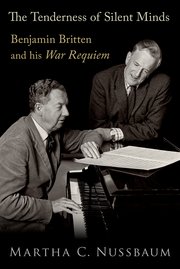
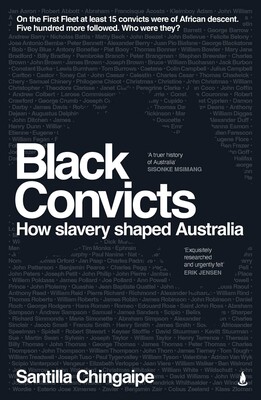

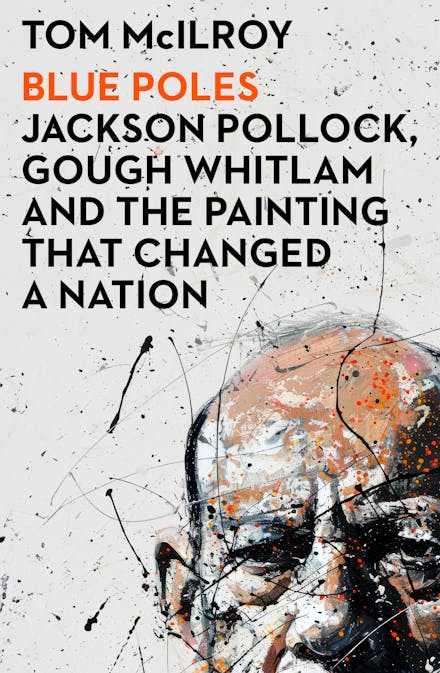
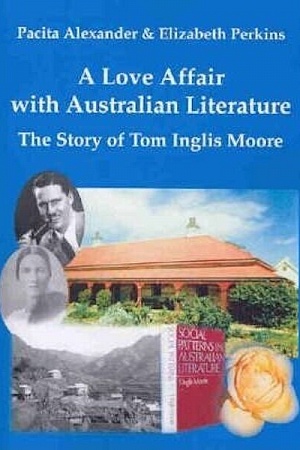
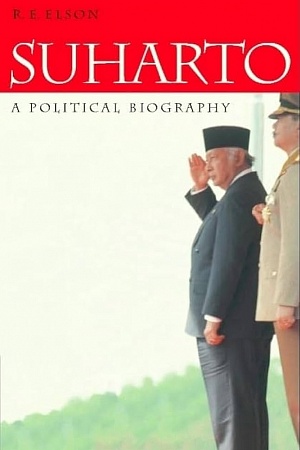
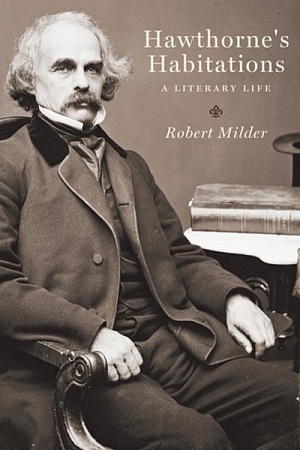




Leave a comment
If you are an ABR subscriber, you will need to sign in to post a comment.
If you have forgotten your sign in details, or if you receive an error message when trying to submit your comment, please email your comment (and the name of the article to which it relates) to ABR Comments. We will review your comment and, subject to approval, we will post it under your name.
Please note that all comments must be approved by ABR and comply with our Terms & Conditions.